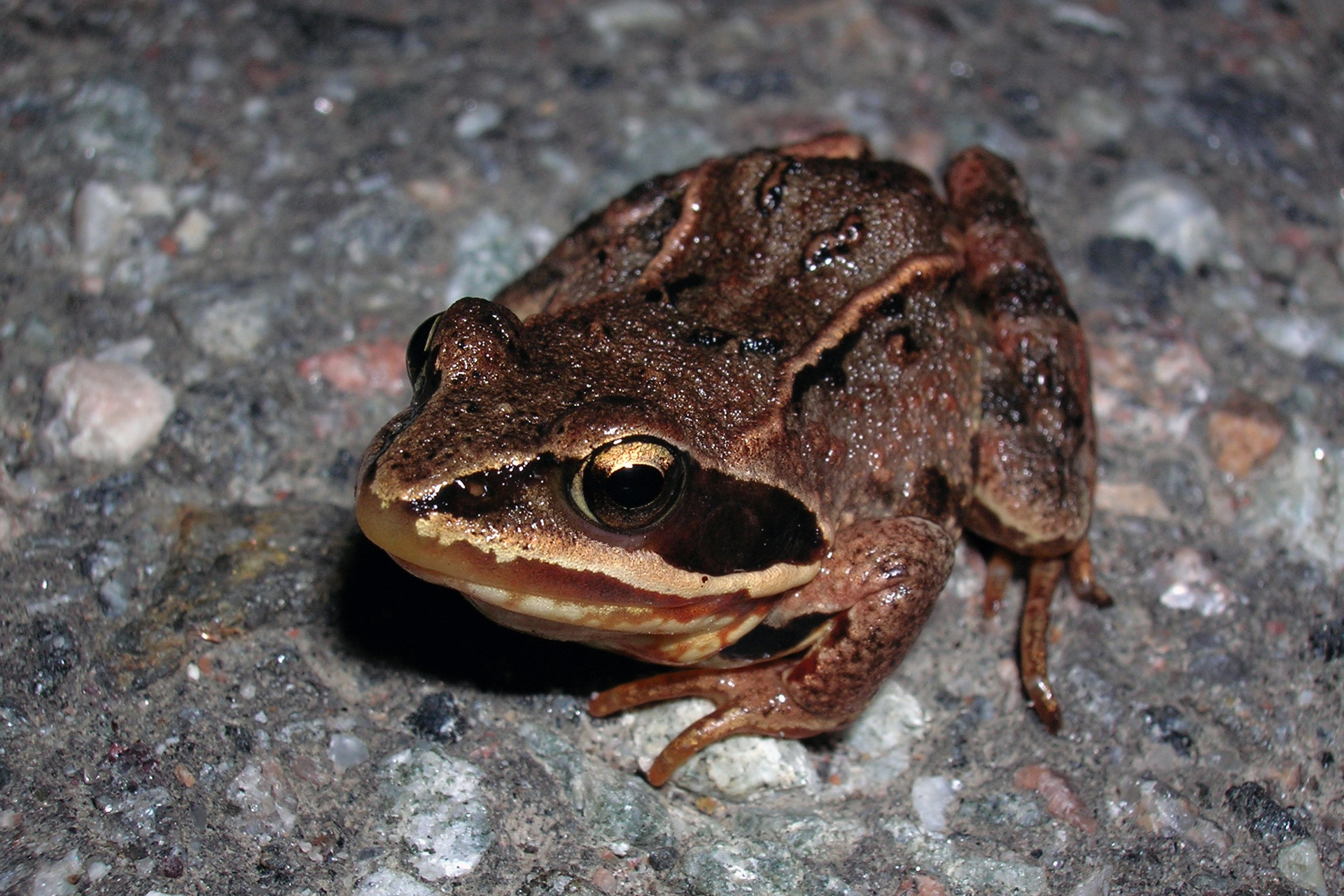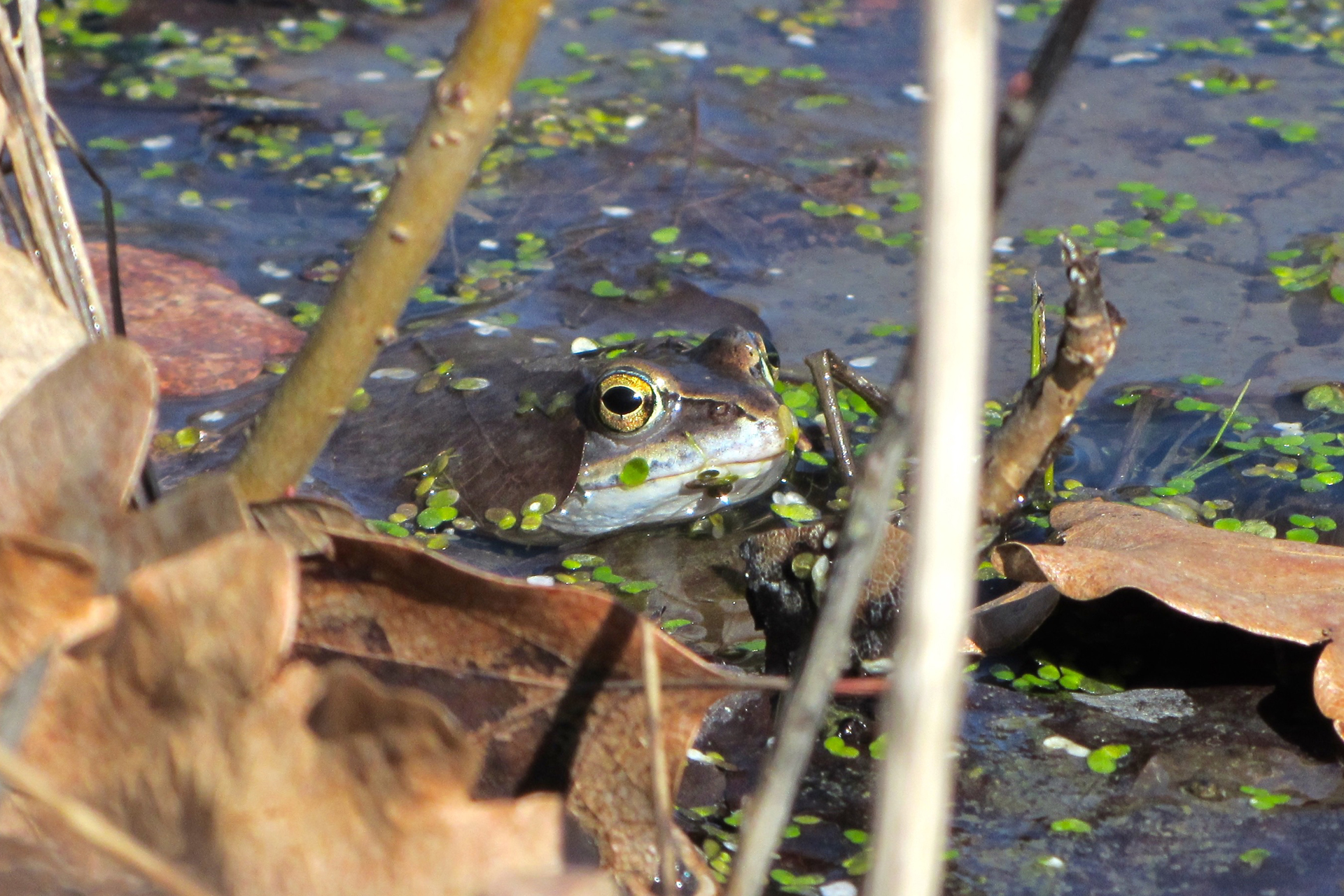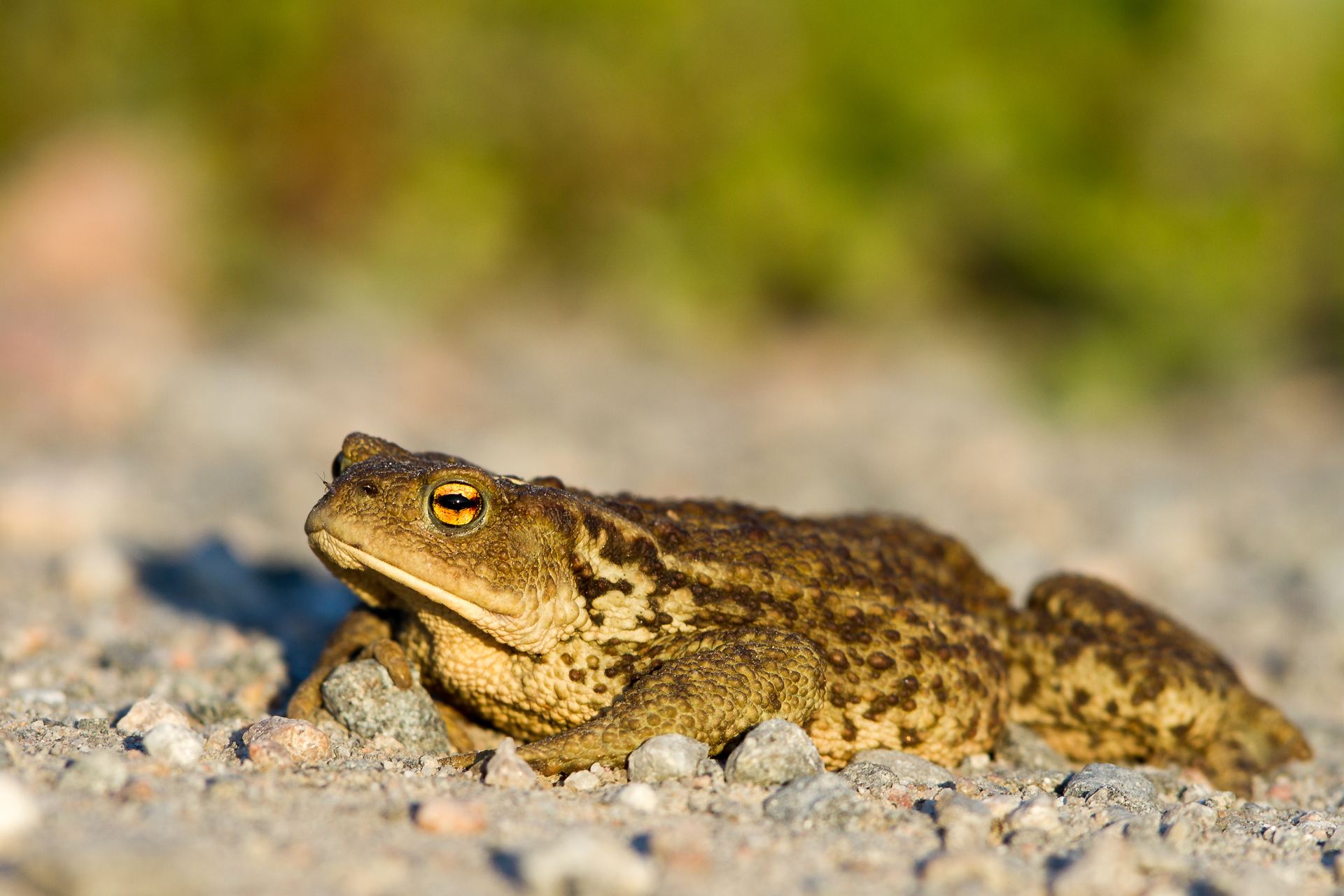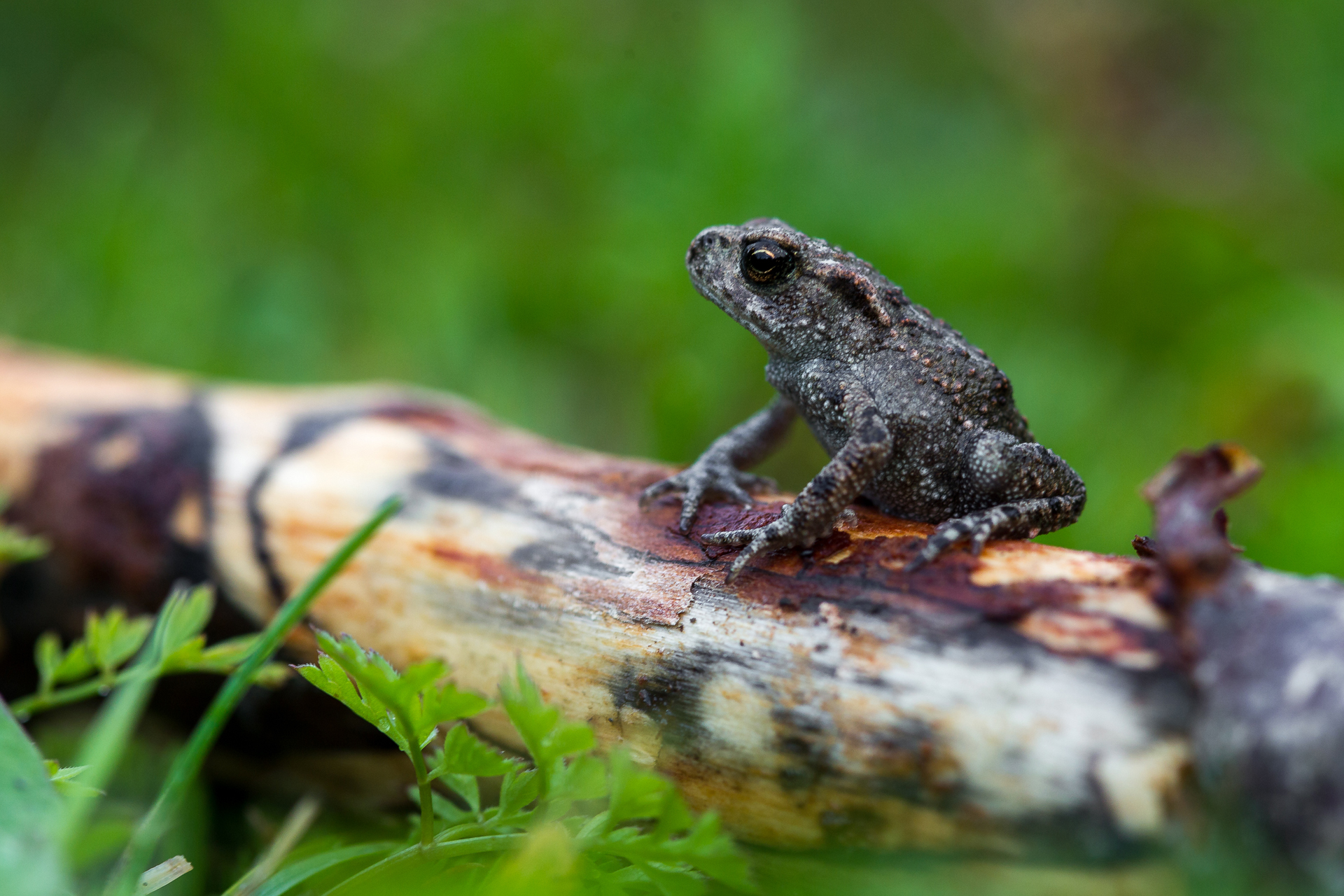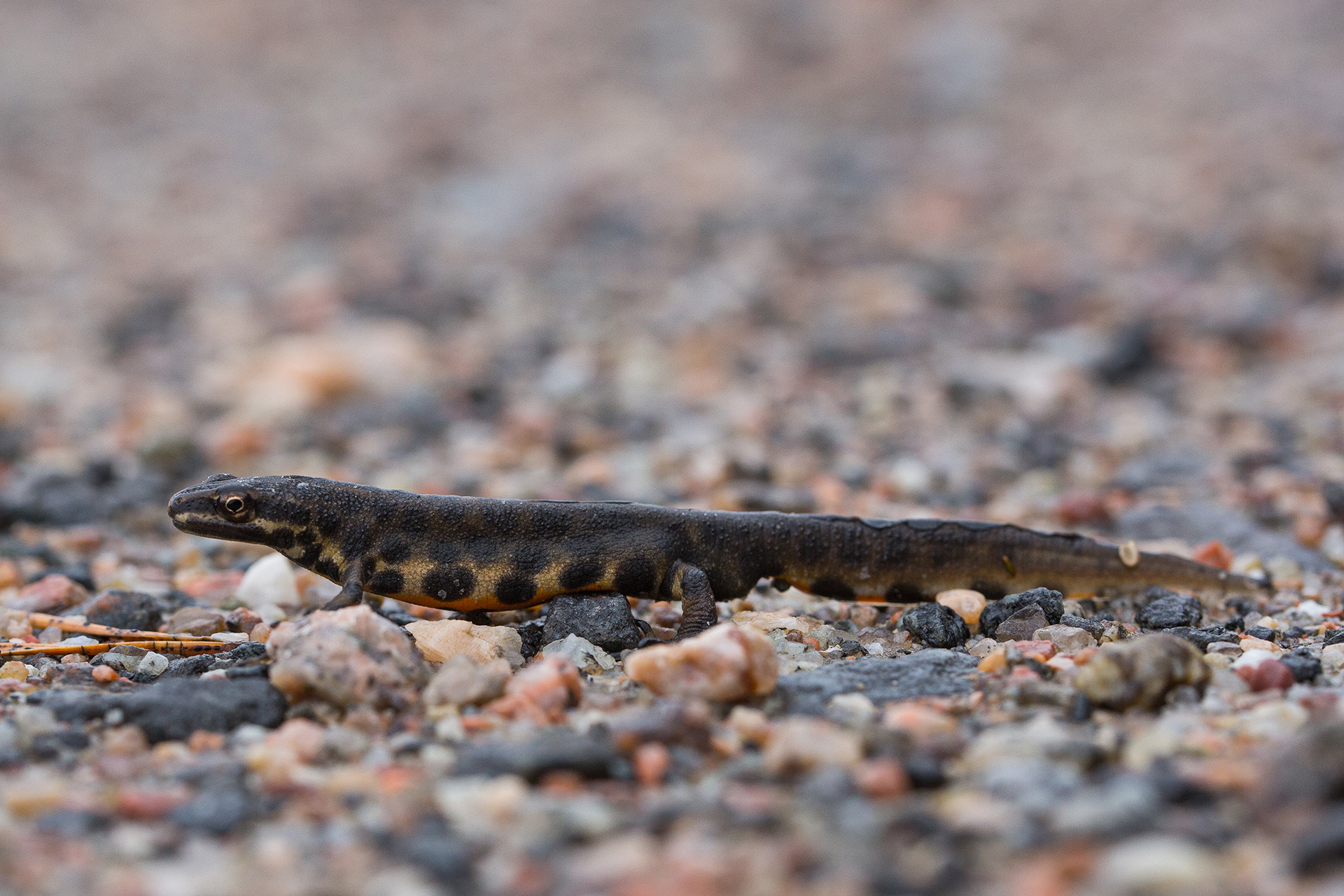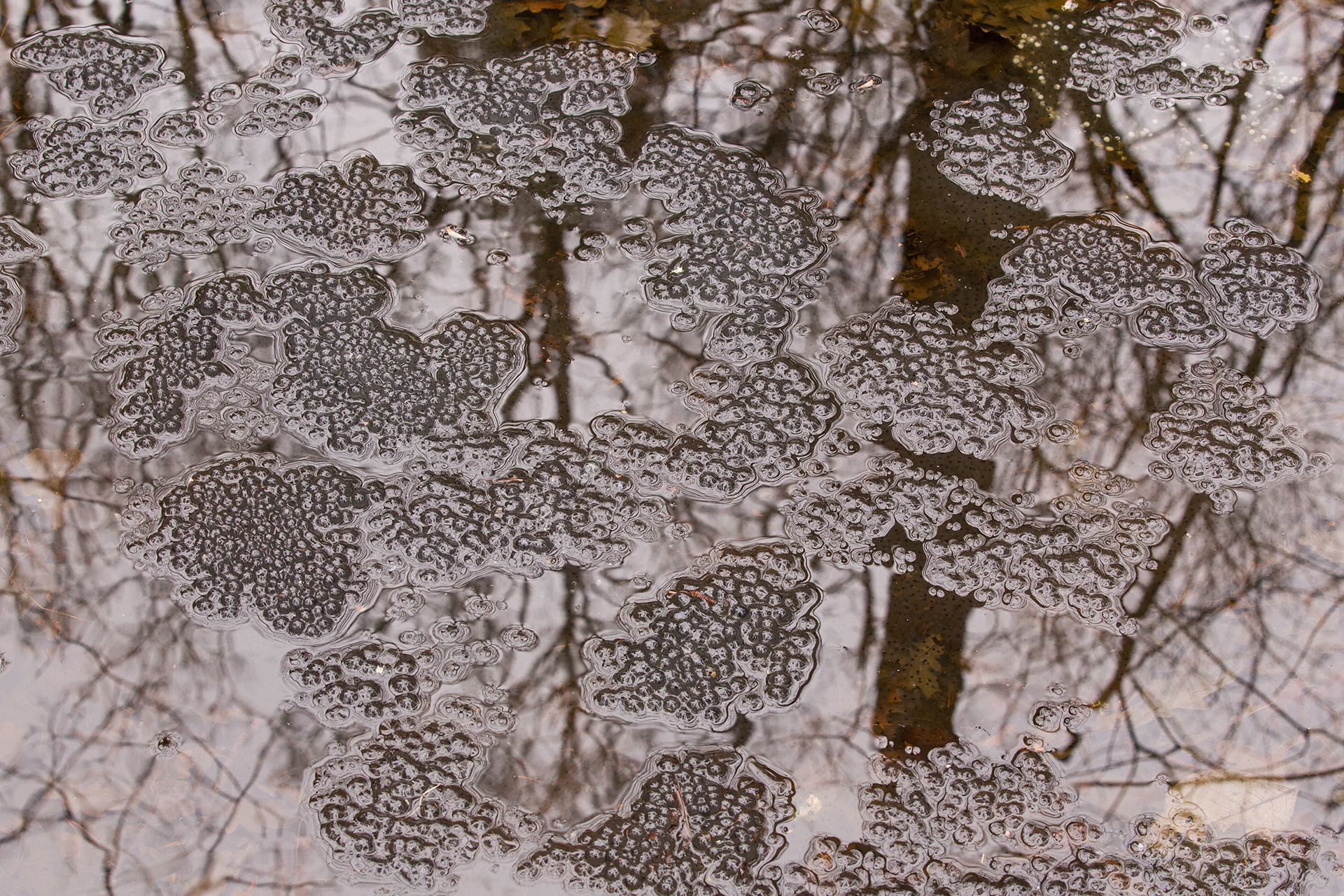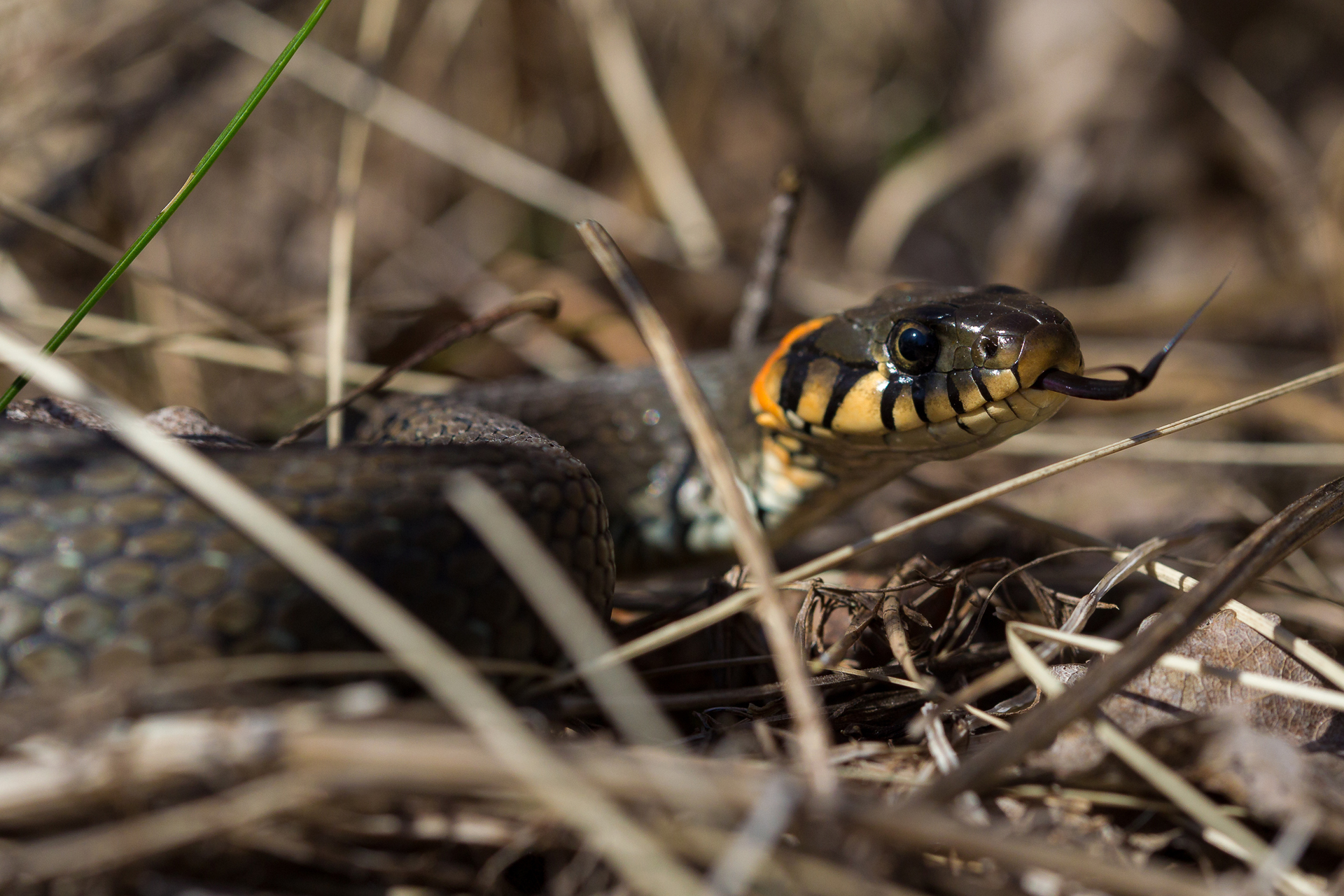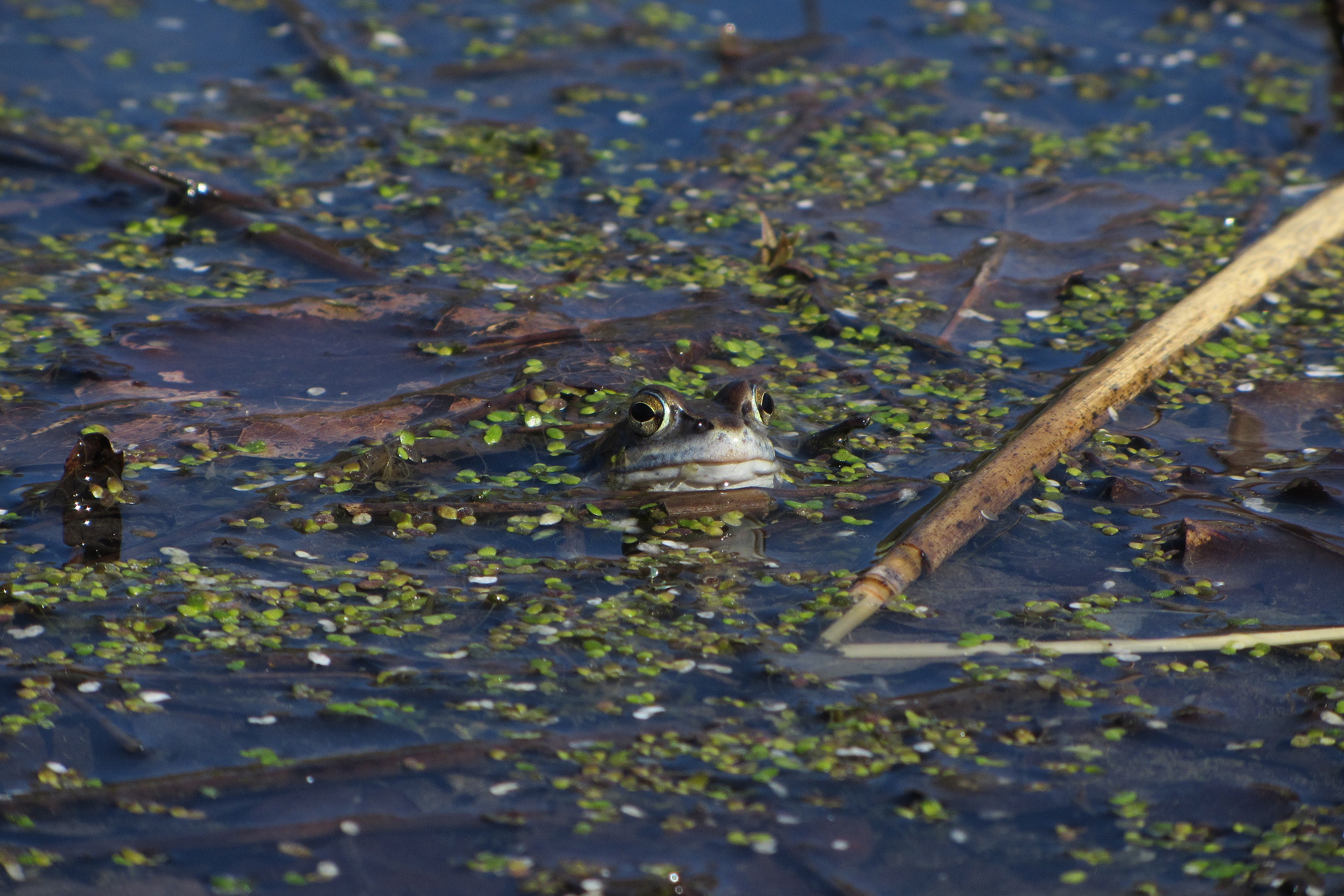Croaking, bubbling or an impressive spawning guise?
Four native species of amphibians occurr on Ruissalo. European common frogs and moor frogs are easiest to spot and identify by their vocalisations in April–May, during their spawning season. During this period, ponds and puddles are filled with the croaking of European common frogs and the bubbling of moor frogs. Those with keen ears may also be able to distinguish the rougher croaking of the common toad in the same ponds. A generally lesser-known species is the smooth newt, a lizard-like salamander less than 10 cm in length. It is also easiest to spot during the breeding season, in April–May, in small water bodies. While smooth newts are silent, the males are easy to identify during the breeding season by their impressive crests and orange bellies. All of Finland’s naturally occurring amphibians are protected. That being the case, please leave any amphibian eggs, tadpoles or adult individuals that you may find on the island undisturbed.
All amphibians require water to breed. They lay their eggs, or spawn, in small ponds, puddles or even ditches. The eggs hatch into larvae, or tadpoles, which breathe through gills and move about using their tails. The larvae then undergo metamorphosis, during which they lose their tails (except for the smooth newt) and their gills turn into lungs: the process turns the aquatic larvae into adults that can survive on both land and in water. In fact, the scientific name of the class of amphibians, Amphibia, is a reference to this ability to live on both land and in water.
